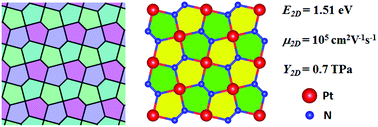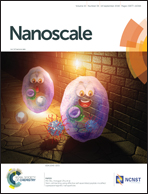Penta-Pt2N4: an ideal two-dimensional material for nanoelectronics†
Abstract
Since the discovery of graphene, two-dimensional (2D) materials have paved new ways to design high-performance nanoelectronic devices. To facilitate applications of such devices, there are three key requirements that a material needs to fulfill: sizeable band gap, high carrier mobility, and robust environmental stability. However, among the most popular 2D materials studied in recent years, graphene is gapless, hexagonal boron nitride has a very large band gap, transition metal dichalcogenides have low carrier mobility, and black phosphorene is ambience-sensitive. Thus far, these three characteristics could seldom be satisfied by only a single material. Therefore, it is a great challenge to find an ideal 2D material that can overcome these limitations. In this study, we theoretically predicted a novel planar 2D material penta-Pt2N4, which was designed using the Cairo pentagonal tiling as well as the rare nitrogen double bonds. Most significantly, 2D penta-Pt2N4 exhibits excellent intrinsic properties, including large direct band gap (up to 1.51 eV), high carrier mobility (up to 105 cm2·V−1·s−1), very high Young's modulus (up to 0.70 TPa), and robust dynamic, thermal, and ambient stabilities. Moreover, penta-Pt2N4 is the global minimum structure among 2D materials with PtN2 stoichiometry. We also propose a CVD/MBE scheme to enable its experimental synthesis. We envision that 2D penta-Pt2N4 may find wide applications in the field of nanoelectronics.



 Please wait while we load your content...
Please wait while we load your content...